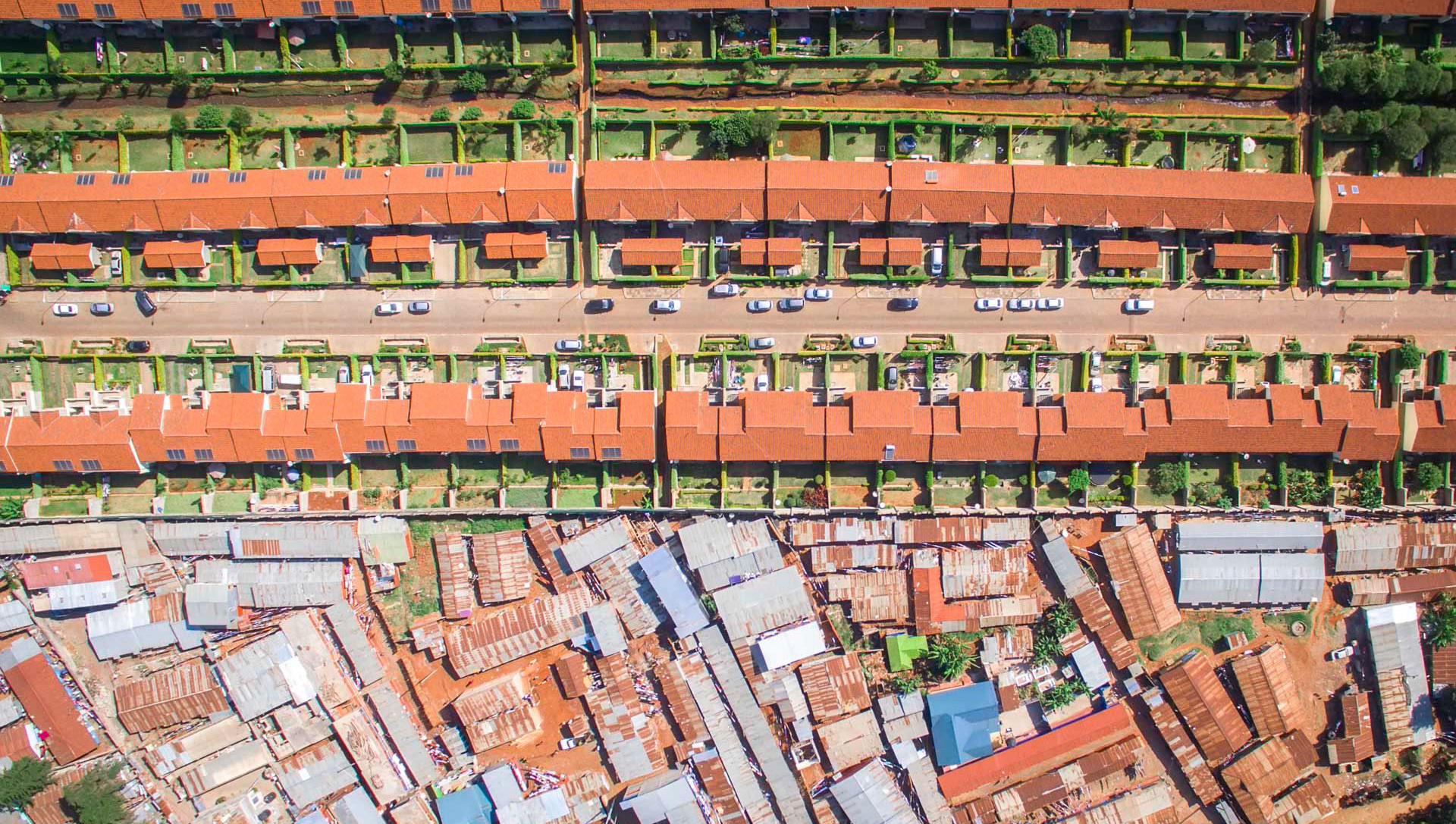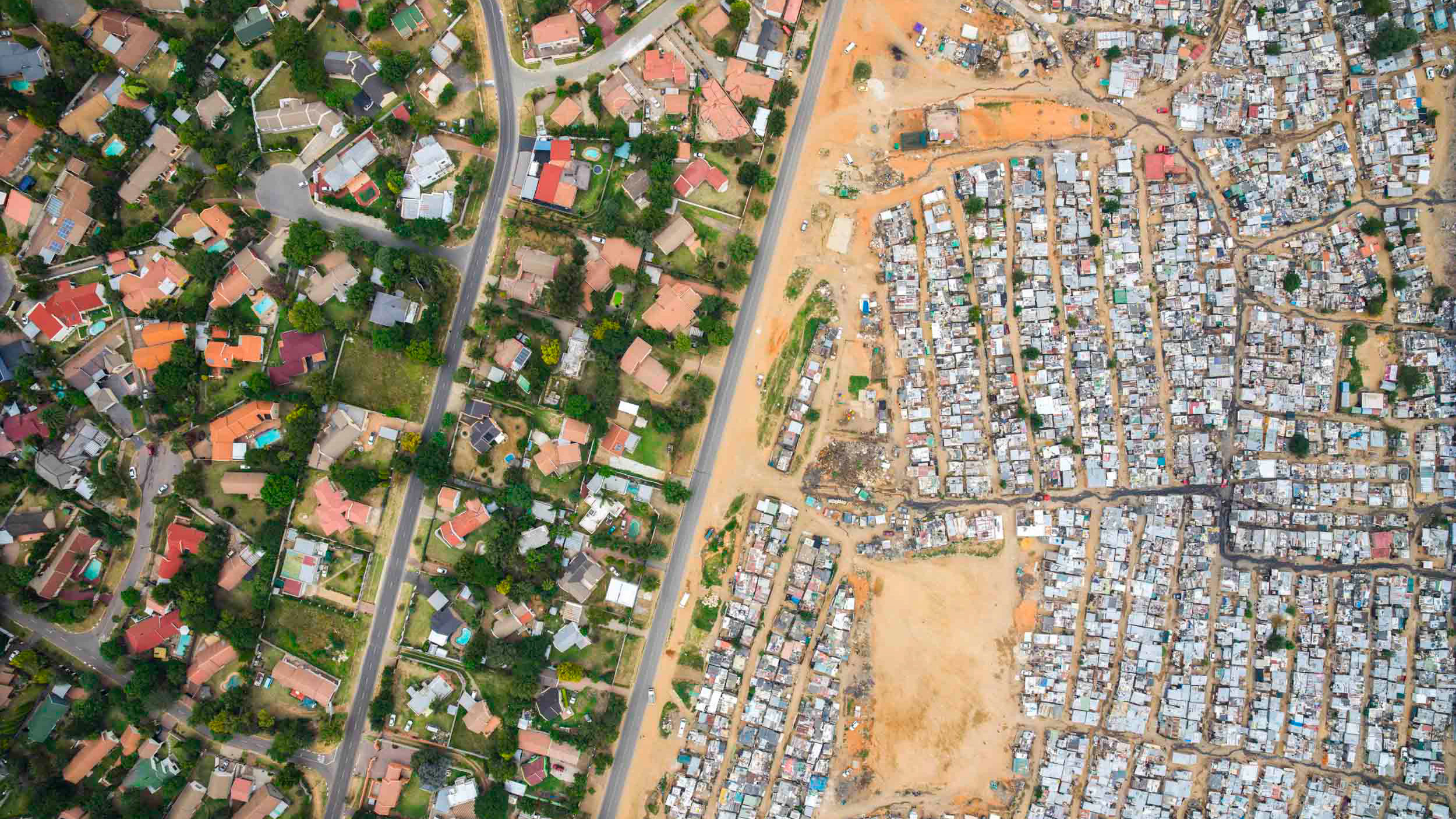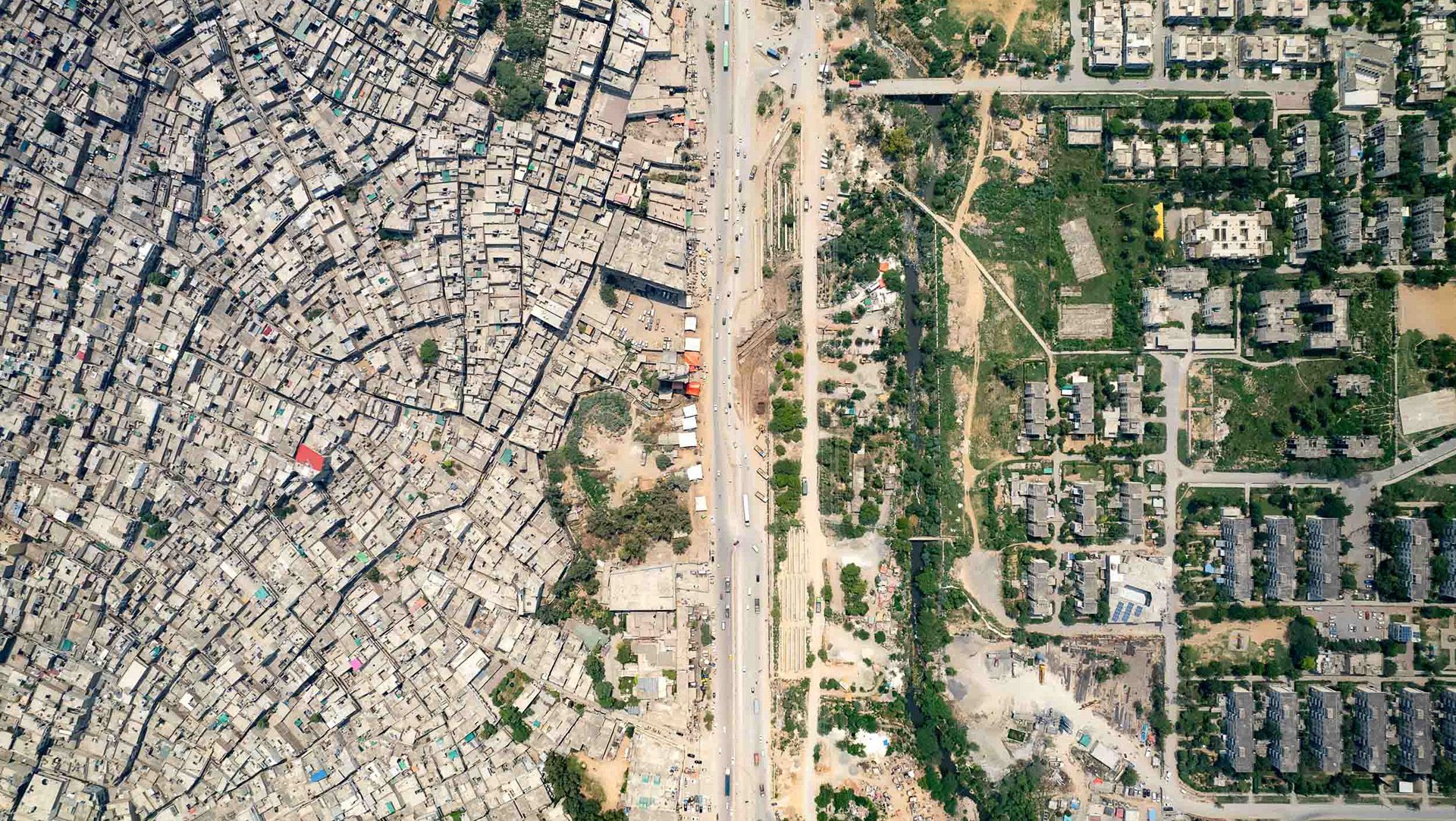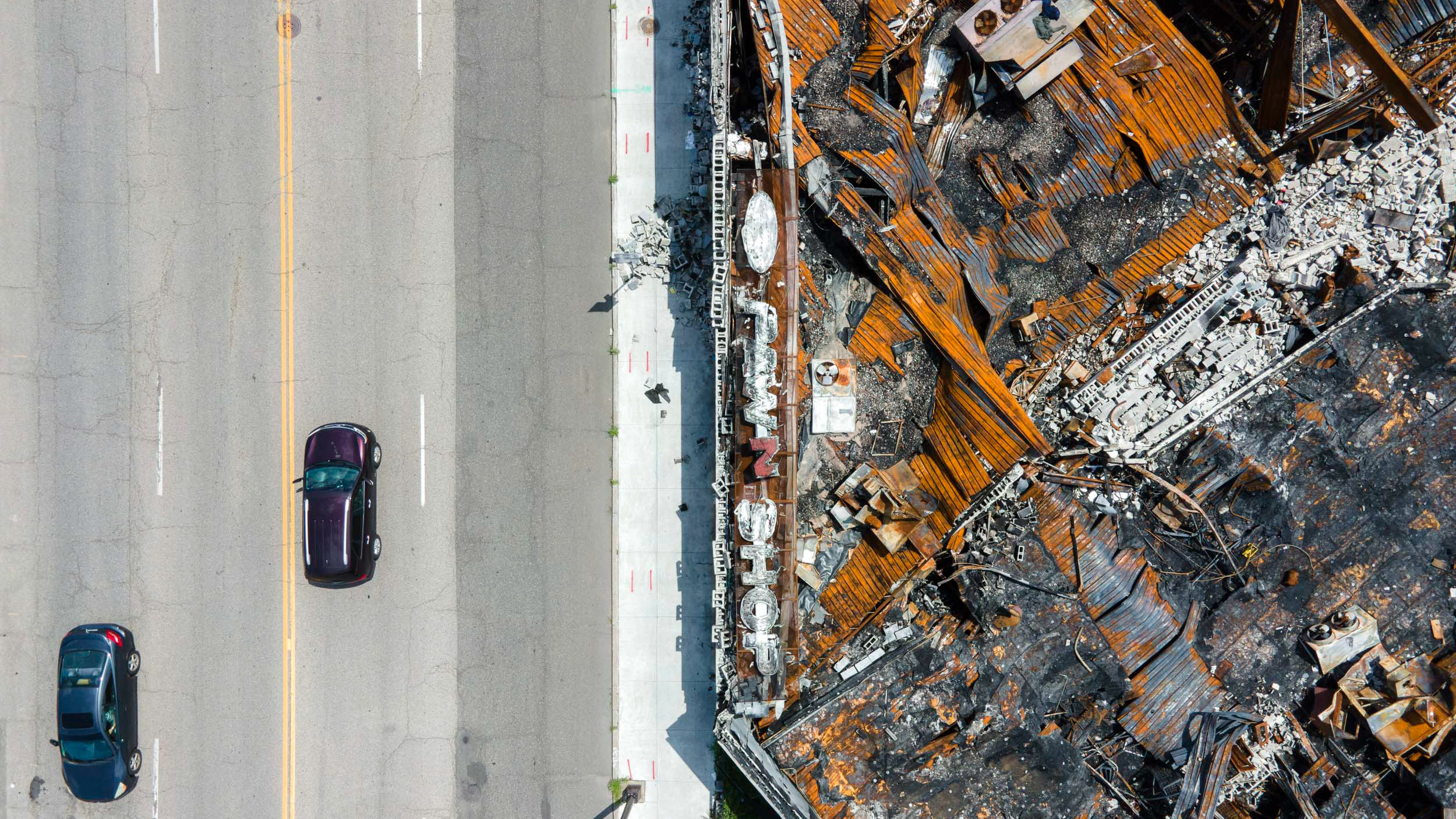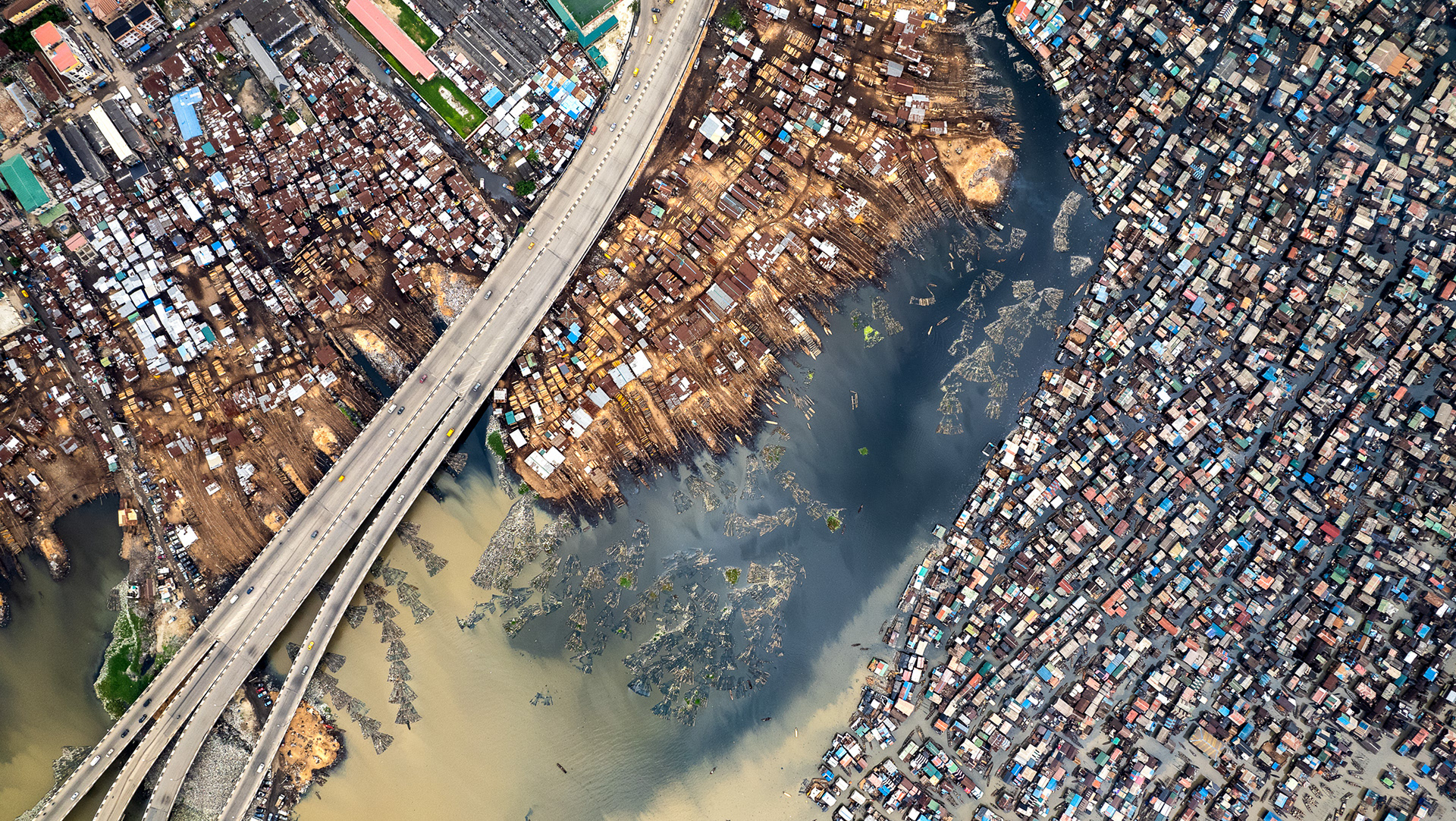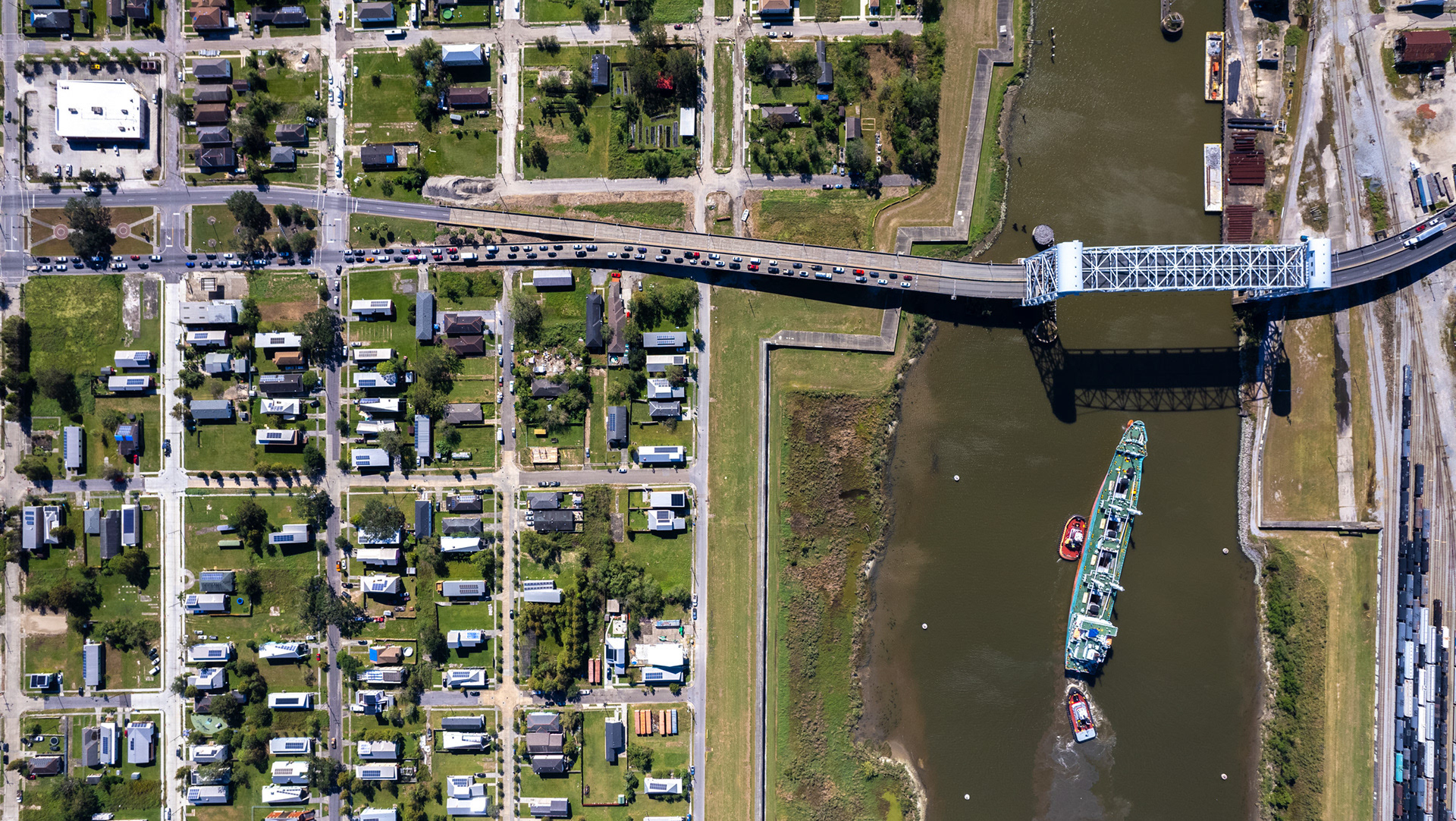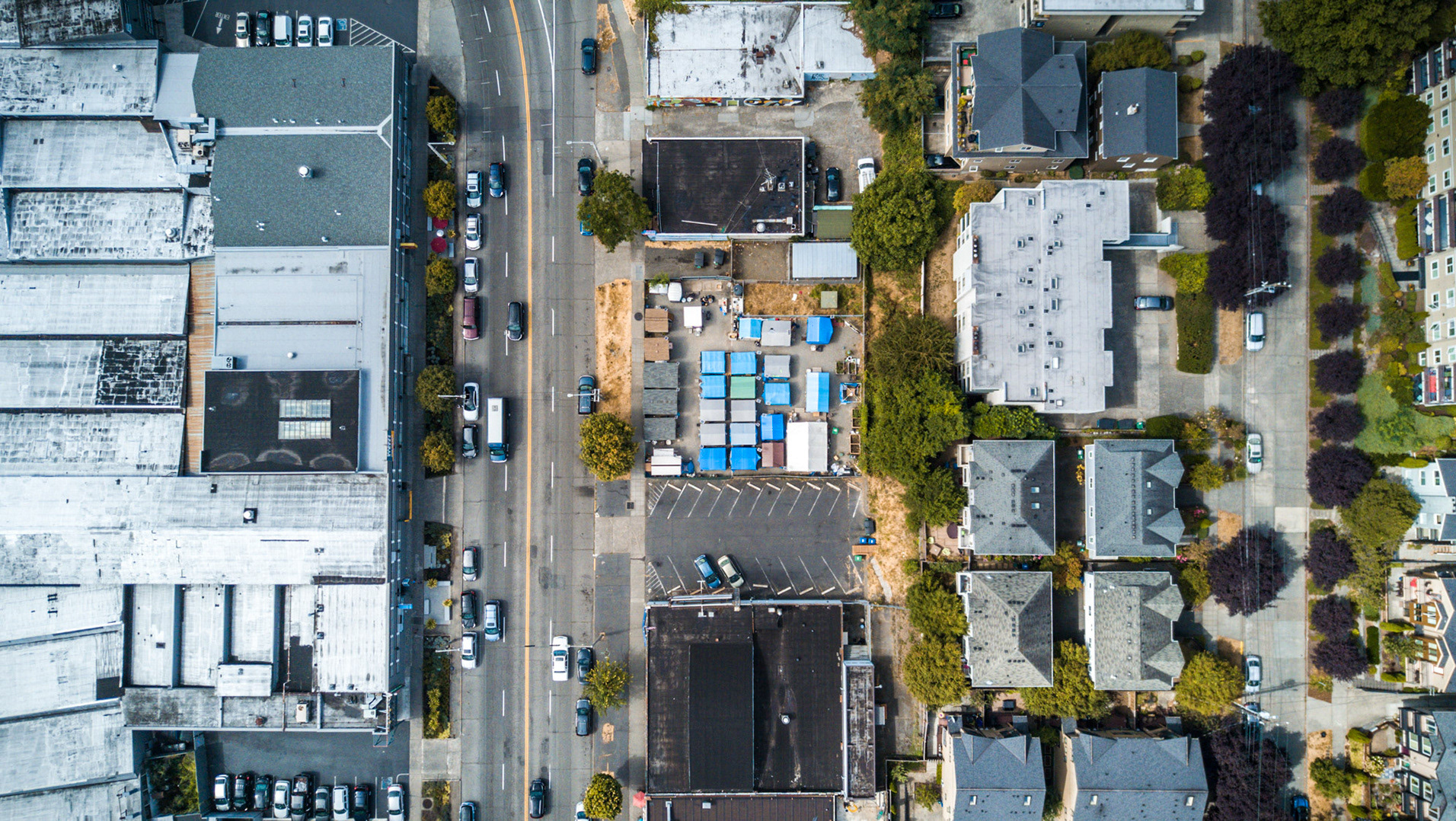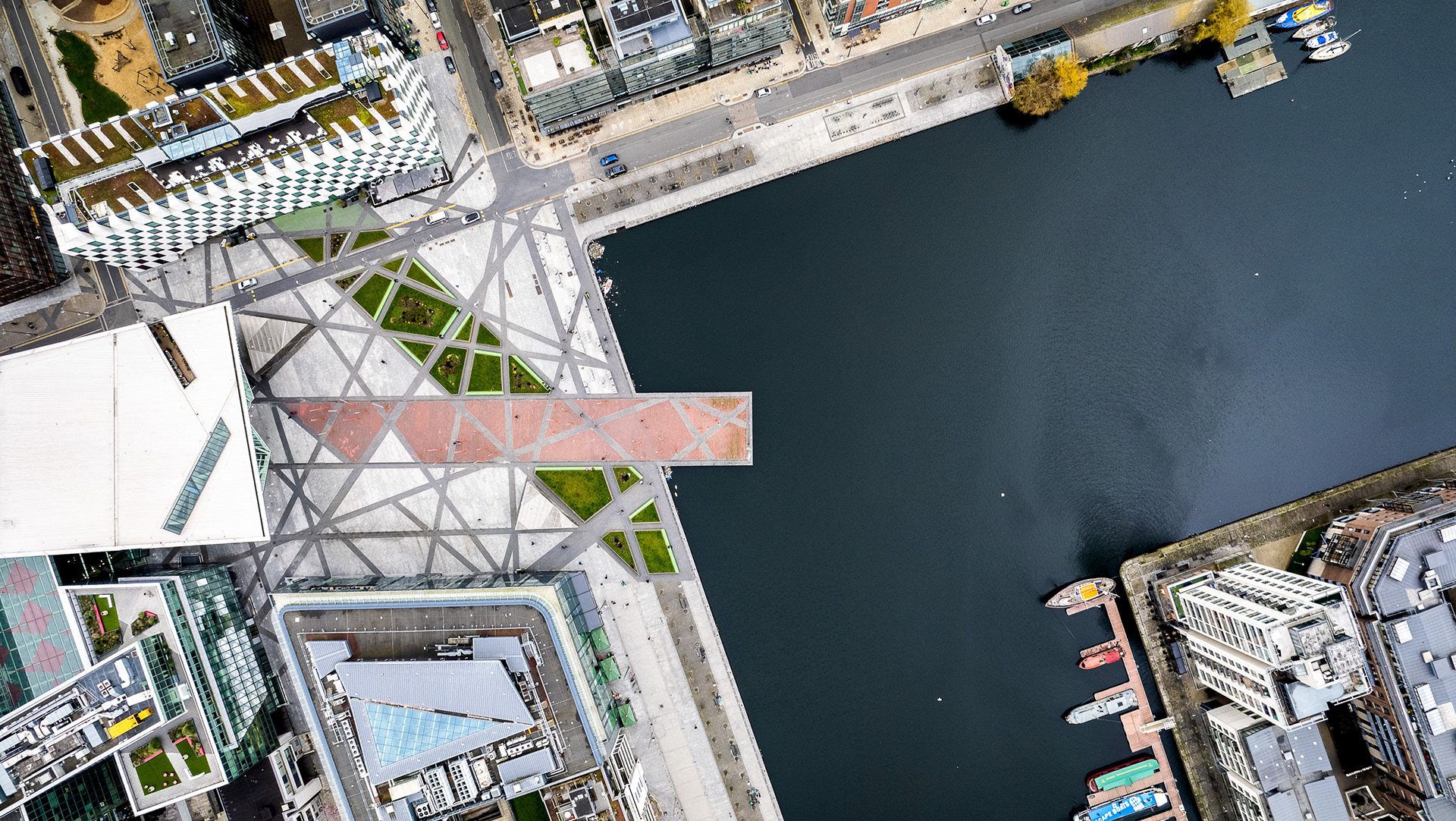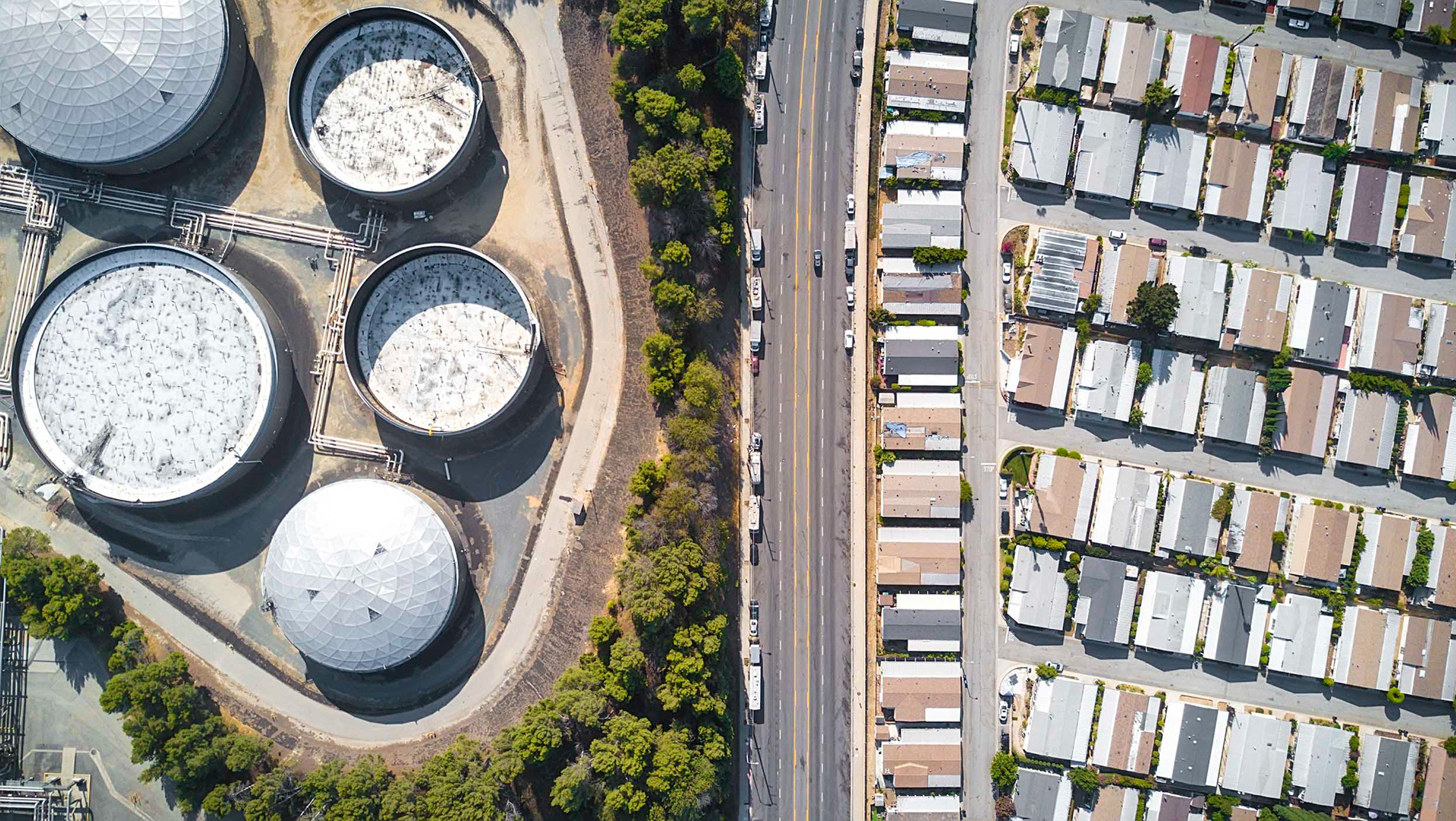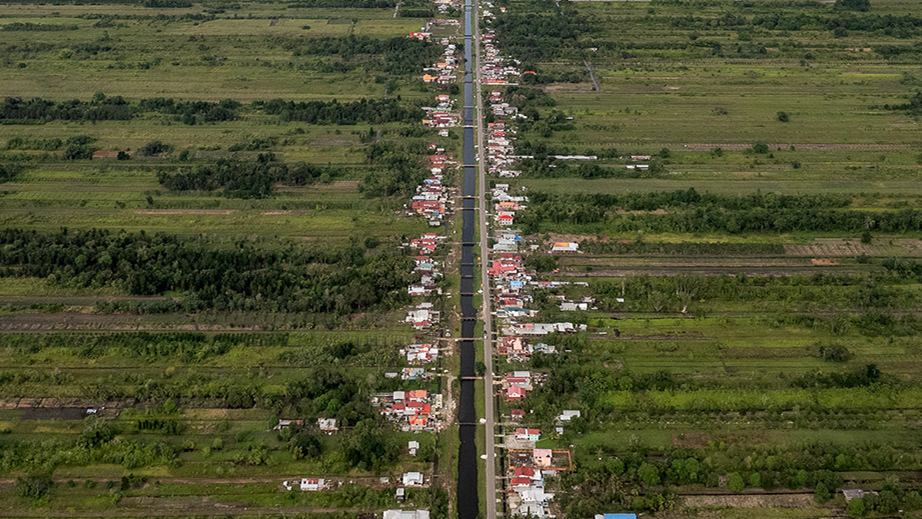Formal houses being built on the northern edge of Swakopmund. The pipeline which supplies drinking water to town is visible in the lower right.
Namibia is undergoing a rapid and major transition from a rural-based society to one based largely in urban areas. Informal settlements like these, on the outskirts of the foggy coastal city of Swakopmund, have grown rapidly in the last 10 years. About one fourth of Namibia’s population is obliged to live in shanty shacks under deplorable conditions, and even if they have the money to build with permanent construction materials, the law does not allow many of them to do so.
The "informal" area of DRC (Democratic Resettlement Community) has ballooned from its roots as a temporary housing area to a city in itself, equal in population to the formal areas of Swakopmund.
The Salt Company, located just north of Swakopmund, creates over 120,000 tons of salt per year, mainly for export to South Africa.
These salt ponds have differing algae levels which give them their beautiful red and orange hues.
Another angle on the DRC informal settlement looking west, toward the Atlantic Ocean. Fog often shrouds Namibia's coastline due to the interaction of hot desert air with the cold air above the ocean. Sometimes temperatures even a few kilometers inland will be 10-15 degrees warmer.
The area just outside Swakopmund is desert, with little to no population or development. A 4x4 is essential.
Uranium mines in the Namib desert make Namibia globally significant. Namibia is one of Africa's only uranium exporters, and poised to expand operations.
More information on Namibian urbanization can be found here.

